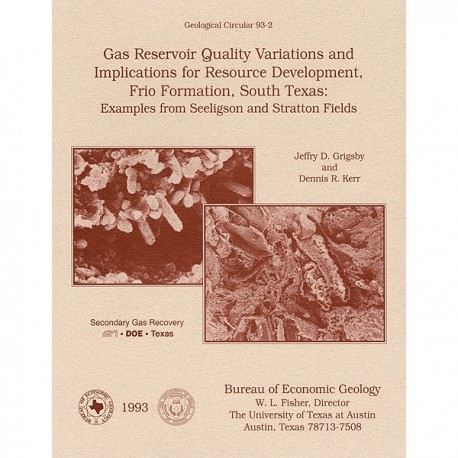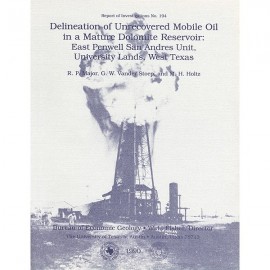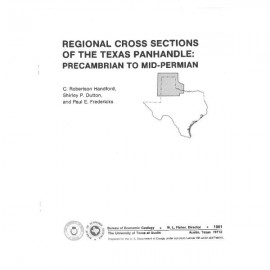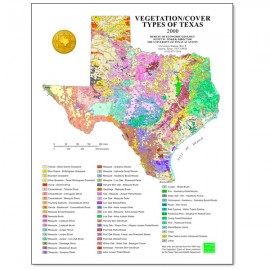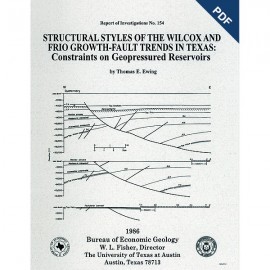Geological Circulars
-
Books & Reports
- Reports of Investigations
- Guidebooks
- Udden Series
- Geological Circulars
- Down To Earth
- Atlases of Major Oil and Gas Reservoirs
- Texas Memorial Museum Publications
- Environmental Geologic Atlas of the Texas Coastal Zone
- Mineral Resource Circulars
- Other Reports
- Seminars and Workshops
- Handbooks
- Submerged Lands of Texas
- Symposia
- Annual Reports
- Open File Reports
-
Maps & Cross Sections
- Thematic Maps
- Miscellaneous Maps, Charts & Sections
- Geologic Atlas of Texas
- STATEMAP Project Maps
- Geologic Quadrangle Maps
- Cross Sections
- Highway Geology Map
- Energy and Mineral Resource Maps
- Shoreline Change and Other Posters
- Wilcox Group, East Texas, Geological / Hydrological Folios
- Bouguer Gravity Atlas of Texas
- River Basin Regional Studies
- Featured Maps
- Posters
- Teachers & the Public
-
Geological Society Publications
- Gulf Coast Association of Geological Societies
- Alabama Geological Society
- Austin Geological Society
- Corpus Christi Geological Society
- Houston Geological Society
- Lafayette Geological Society
- Mississippi Geological Society
- New Orleans Geological Society
- South Texas Geological Society
- GCS SEPM Publications
- Historic BEG & UT Series
Gas Reservoir Quality Variations and Implications for Resource Development, Frio Formation, South Texas:
GC9302
For a downloadable, digital version: GC9302D.
This product is no longer in stock
GC9302. Gas Reservoir Quality Variations and Implications for Resource Development, Frio Formation, South Texas: Examples from Seeligson and Stratton Fields, by J. D. Grigsby and D. R. Kerr. 27 p., 19 figs., 3 tables, 1993. ISSN: 0082-3309. Print.
To puchase this publication as a PDF download, please order GC9302D.
ABSTRACT
Discovery of volcanic glass detritus in fluvial deposits of the middle Frio Formation (Seeligson and Stratton fields) of South Texas has resulted in a new classification of reservoir types (type I and type II) within this formation. Type I reservoirs consist of sandstones that do not contain volcanic glass and have an average permeability of 36 md (geometric mean). Although calcite cement can strongly inhibit permeability in type I reservoirs, the development of secondary porosity by the dissolution of feldspar, volcanic rock fragments, and calcite cement has led to a well-developed intergranular porosity.
Type II reservoirs, which are present in the medial third of the middle Frio Formation, consist of sandstones that contain volcanic glass detritus and volcanic ash matrix. These sandstones have a poorly developed intergranular pore system and an average permeability of 2.6 md (geometric mean). Secondary porosity (moldic and intragranular) may be well developed in these sandstones, but the bridging of intergranular pore throats by calcite and analcime cements and by matrix effectively isolates secondary pores and reduces permeability. Permeability is further reduced by the filling of secondary pores by mixed-layer chlorite-smectite (corrensite). Volcanic glass in the medial third of the middle Frio Formation is detectable on gamma-ray logs by elevated API counts in both sandstones and mudstones. Because alteration of volcanic glass strongly affects permeability, gamma-ray log response can be used to assess resource potential in the middle Frio Formation of South Texas. In addition, the Frio interval containing volcanic glass can be used as a chronostratigraphic unit (tentatively thought to represent the 30- to 34-mya eruptive episode in the Trans-Pecos region) for interfield correlation in fluvial deposits.
Keywords: diagenesis, middle Frio Formation, reservoir quality, resource assessment, South Texas, stratigraphy, Texas, volcanic glass detritus
Citation
Grigsby, J. D., and Kerr, D. R., 1993, Gas Reservoir Quality Variations and Implications for Resource Development, Frio Formation, South Texas: Examples from Seeligson and Stratton Fields: The University of Texas at Austin, Bureau of Economic Geology, Geological Circular 93-2, 27 p.
